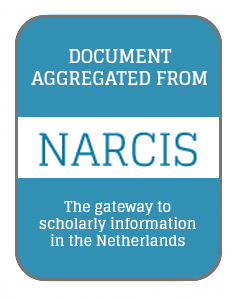Focal point
Location
National Academic Research and Collaborations Information System (NARCIS) is the main Dutch national portal for those looking for information about researchers and their work. NARCIS aggregates data from around 30 institutional repositories. Besides researchers, NARCIS is also used by students, journalists and people working in educational and government institutions as well as the business sector.
NARCIS provides access to scientific information, including (open access) publications from the repositories of all the Dutch universities, KNAW, NWO and a number of research institutes, datasets from some data archives as well as descriptions of research projects, researchers and research institutes.
This means that NARCIS cannot be used as an entry point to access complete overviews of publications of researchers (yet). However, there are more institutions that make all their scientific publications accessible via NARCIS. By doing so, it will become possible to create much more complete publication lists of researchers.
In 2004, the development of NARCIS started as a cooperation project of KNAW Research Information, NWO, VSNU and METIS, as part of the development of services within the DARE programme of SURFfoundation. This project resulted in the NARCIS portal, in which the DAREnet service was incorporated in January 2007. NARCIS has been part of DANS since 2011.
DANS - Data Archiving and Networked Services - is the Netherlands Institute for permanent access to digital research resources. DANS encourages researchers to make their digital research data and related outputs Findable, Accessible, Interoperable and Reusable.
Members:
Resources
Displaying 1821 - 1825 of 1863Landhuishoudkundige aspecten van herverdelingen van grootgrondbezit
Rede. Landbouwhogeschool te Wageningen. 12 November 1959
Onderzoek naar de bruikbaarheid van de opbrengstwaardeleer voor de taxatie van landbouwgronden
After a survey of the development of the thinking in the Netherlands on the appraisal of agricultural lands, there is an analysis of the Ricardian view on the land rent. Ricardo's concept of rent proved to be tied to some specific suppositions. To him the size of population was endogenous. Mol placed the land rent in five different models, drawn up by him. In the first a legal fixation of the rent, which differed from the equilibrium rent, resulted in a deviation from the optimum size of the plant. An increase in prices of agricultural produce brought about a rise in land rent.


